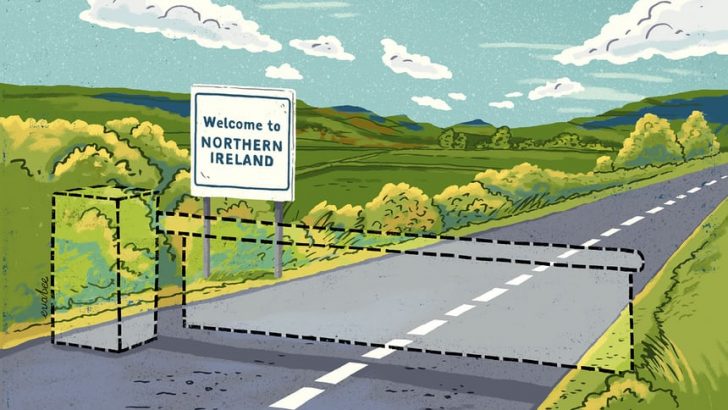From Partition to Brexit: The Irish Government and Northern Ireland
by Donnacha ó Beacháin (Manchester University Press, £75.00 hb / £22.99 pb)
Peter Hegarty
Donnacha Ó Beacháin, Associate Professor of Politics at the School of Law and Government at DCU, begins and ends his book with discussions of the Ulster question’s affronts to democracy.
Partition, he tells us, was an attempt by the British political elite “to reconcile the conflicting demands of their loyal supporters, who constituted 18% of the Irish population, and the majority wish for total separation from the United Kingdom”.
If those who dreamed up Northern Ireland thought they were separating two peoples who could no longer live together, then they made a terrible mistake: “Rather than separating two peoples that could not live peaceably together, partition brought them closer together.”
Conflict
As well as producing conflict, partition distorted the two Irish economies. The northern state spent heavily on repression, at one stage having a policeman for every two able-bodied adult Catholic males. The Troubles forced Dublin to increase spending on security to the detriment of everything else. Taoiseach Liam Cosgrave told the Dáil in June 1974 that “the increased funds required to expand the army and police” were “sufficient to have provided up to 8,000 houses, accommodating up to 40,000 people, or provided industrial grants capable of creating 20,000 new jobs”.
Decades passed before Dublin learned to take a pragmatic view about partition. An early and grave error was the appointment of Eoin MacNeill, an historian of ancient Ireland, who had no legal background, to the Boundary Commission. MacNeill compounded his inadequacy by dividing his time between his work with the Commission and his duties in Dublin. A fully-engaged professional lawyer might have delivered a better outcome for the Free State, or might at least have been alive to the cynical, slippery ways in which the Commission went about its business.
De Valera’s refusal to allow Fianna Fáil to organise in the North was another blunder in that it prevented Dublin from gaining a purchase in the North. Dev wasn’t keen either on having northerners in Leinster House. He feared that they would become embarrassing reminders “or, worse, irritating critics, of the leadership’s failure to end partition”, as the author mordantly observes.
This lack of realism about the North produced an information gap: Dublin wasn’t reading the place when the Troubles broke out. As the violence intensified many southern politicians and commentators allowed themselves to be convinced that the British were honest brokers, keeping warring factions apart. What they didn’t understand or appreciate then was the extent of the collusion between the security forces and loyalist paramilitaries, whose most notorious collaboration was the bombing of Dublin and Monaghan.
Over the decades Southern governments have learned to be measured and subtle in their approach to the North. Quiet diplomacy has been effective to the extent of giving Dublin unprecedented influence there.
Now, almost a century after its imposition of partition, a British government is again preparing to ignore the wishes of majorities in Ireland, north and south, as well as Scotland, and leave the EU.
Donnacha Ó Beacháin’s original, and admirably thorough book argues that Brexit may hasten Irish reunification. If leaving the EU doesn’t benefit the British economy – and there’s every reason to suppose that it won’t – then a combination of nationalists, who now make up almost half of the population of Northern Ireland, and anti-Brexit unionists could deliver a slim majority in favour of Northern Ireland leaving the UK to re-unite with the rest of Ireland and the EU.


 Illustration: Eva Bee
Illustration: Eva Bee 